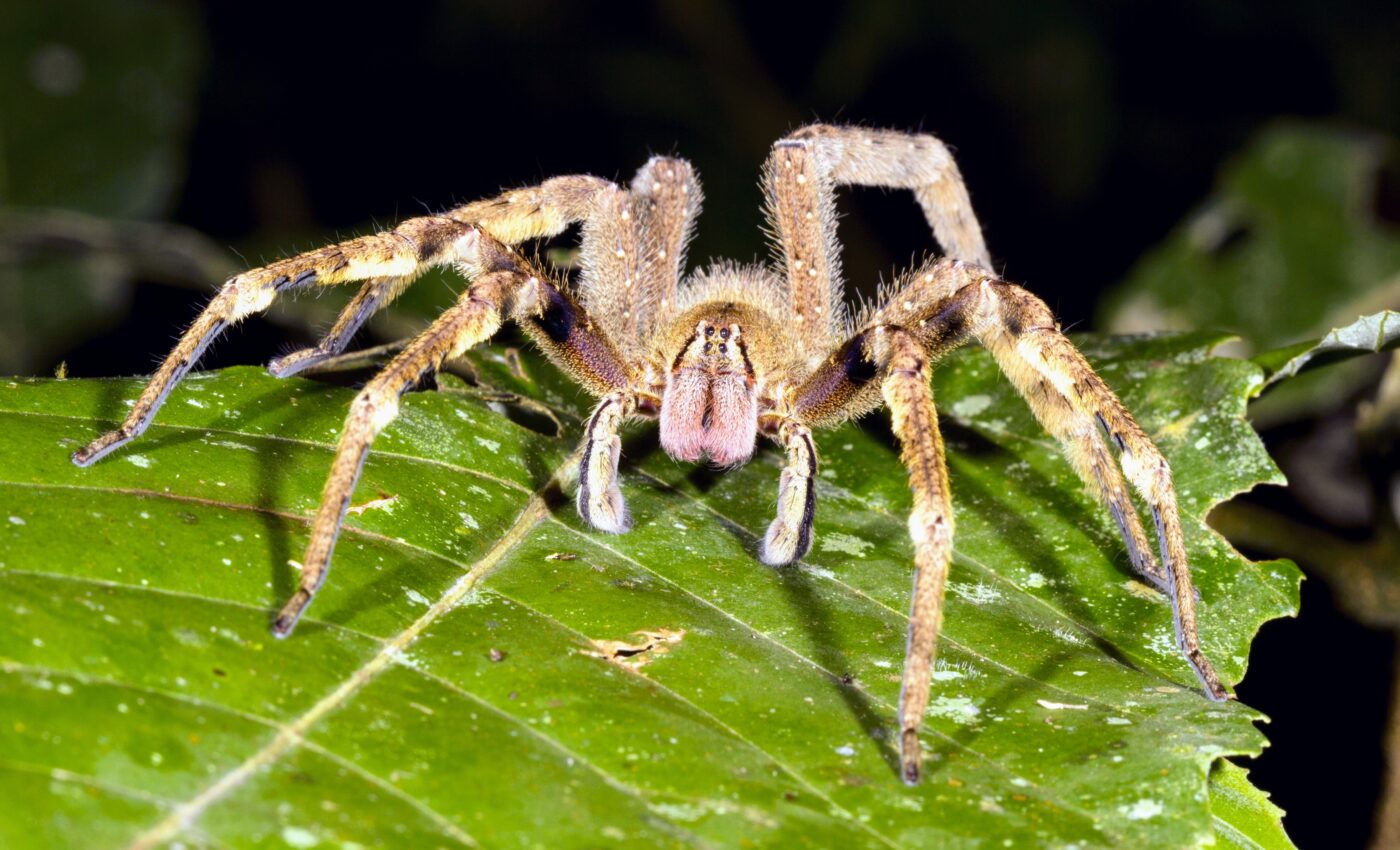
Spider venom might soon be the new Viagra
The Brazilian wandering spider is known to be one of the most dangerous arachnids, due to the extreme potency of its venom.
Bites can cause extreme pain and inflammation, loss of muscle control, and breathing problems, potentially leading to paralysis and suffocation if not treated immediately.
Erectile dysfunction
However, according to a team of scientists led by the Federal University of Minas Gerais, one unusual effect of this venom – the fact that men who are bitten can experience unwanted erections lasting for hours – could make this venom an effective treatment against erectile dysfunction.
After already completing a phase one safety trial, the Brazilian experts are now preparing to launch a phase two clinical trial to test whether a part of the spider venom called BZ371A could work as a treatment for erectile dysfunction by boosting blood flow across the body in men who underwent the surgical removal of their prostate due to cancer.
The previous trials aimed to make sure that this compound, isolated from other dangerous parts of the venom, did not cause any severe side effects.
Pre-existing health conditions
Although medications for treating erectile dysfunction already exist – such as the well-known Viagra – it is estimated that about one out of three men cannot take them due to pre-existing health conditions.
Scientists working on BZ371A hope that this compound will help these men in particular.
Species protection
According to Maria Elena de Lima, a biochemist at Minas Gerais, these findings could also boost efforts to protect species such as the Brazilian wandering spider.
“This helps demonstrate why our fauna must be preserved: it is an inexhaustible source of bioactive molecules, and we do not know even one percent of this potential.”
Study implications
While erectile dysfunction is a common problem in men – particularly over 40 years of age – beings caused by a variety of triggers, such as stress, tiredness, alcohol consumption, or as a side effect of some medicines, many women also struggle with sexual dysfunction.
Thus, the scientists hope that BZ371A from spider venom could also be used one day to help women suffering from such conditions.
Brazilian wandering spider
The Brazilian wandering spider (genus Phoneutria) is a group of large and aggressive spiders found primarily in tropical South America. They are sometimes called “armed spiders” or “banana spiders” due to their occasional appearance in shipments of bananas.
Venom
They are considered to be one of the world’s most venomous spiders based on the potency of their venom. A bite can be deadly to humans, especially children, but fatalities are rare due to the spider’s tendency not to deliver a full envenomation and the availability of antivenom.
Behavior
Unlike typical spiders that stay in their webs, Brazilian wandering spiders are active hunters, primarily at night, hence the name “wandering” spider.
Appearance
They are relatively large, with a body length of up to 5 cm (2 inches) and a leg span of up to 15 cm (6 inches).
Habitat
Wandering spiders are typically found in the tropical regions of South America, especially Brazil. They inhabit a range of environments, from forests to urban areas.
Bite symptoms
Symptoms from a bite can include severe pain, inflammation, increased heartbeat, and difficulty breathing. In some cases, victims can also experience paralysis or death if not treated promptly.
Treatment
If you are bitten by a Brazilian wandering spider, seek medical attention immediately. Antivenom is available in areas where these spiders are found.
Warning
Although they can be aggressive if threatened, Brazilian wandering spiders tend to avoid human interaction when possible. It’s essential to be cautious and avoid handling them.
Remember, while they are dangerous, encounters with these spiders are relatively rare, and bites are even rarer. It’s always good to be informed and take precautions if in an area where they could be present.
Like what you read? Subscribe to our newsletter for engaging articles, exclusive content, and the latest updates.
—-
Check us out on EarthSnap, a free app brought to you by Eric Ralls and Earth.com.













